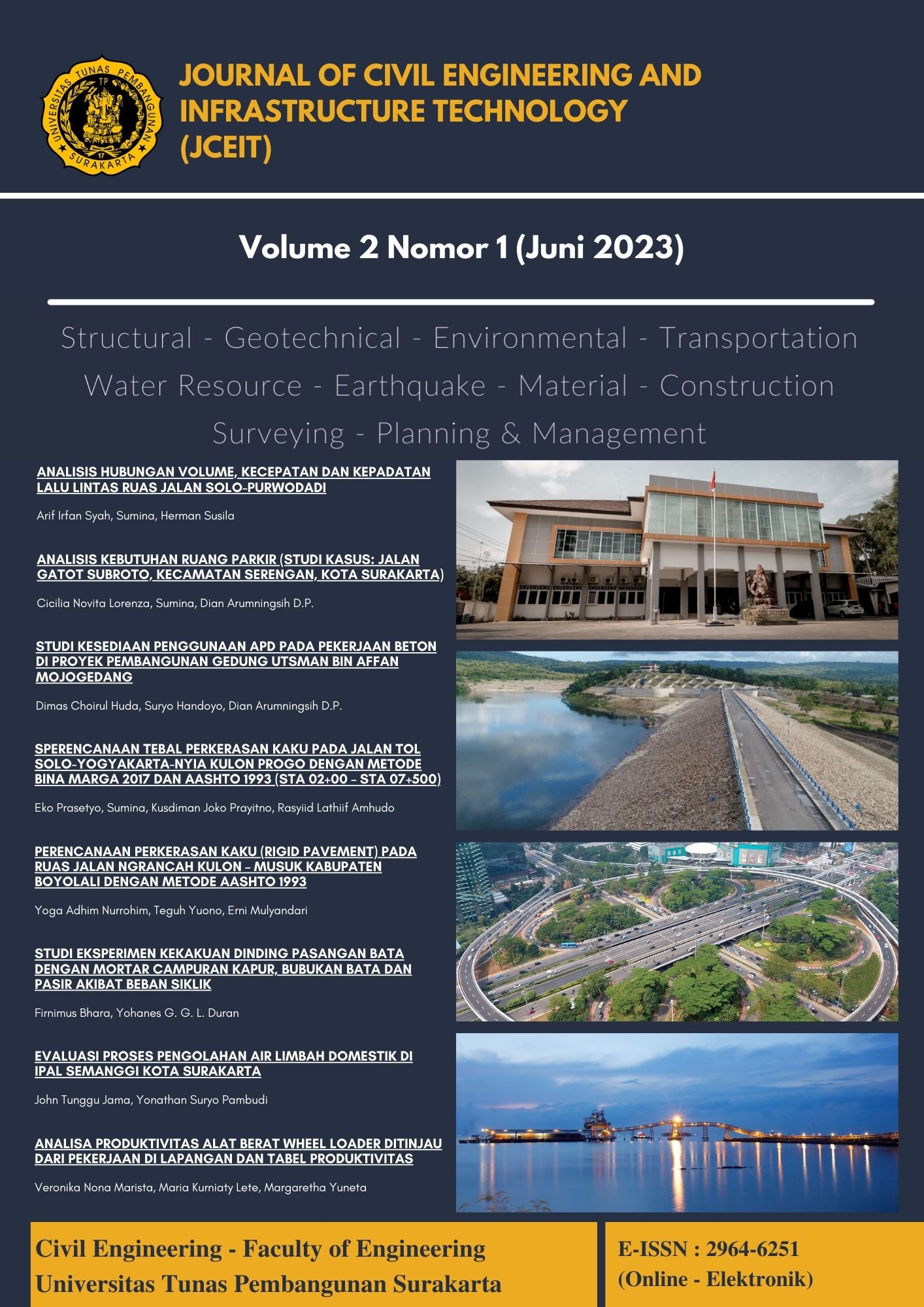ANALISA PRODUKTIVITAS ALAT BERAT WHEEL LOADER DITINJAU DARI PEKERJAAN DI LAPANGAN DAN TABEL PRODUKTIVITAS
Abstract
Several areas around Krokowolon Beach, Namangkewa Village, have been damaged. The existence of coastal damage is caused by a lack of supervision and maintenance of coastal buildings. The Government of Sikka Regency has made various efforts to deal with the problem of damage to the beach, one of which is the construction of coastal safety sheet piles to strengthen. The purpose of this study is to make a comparison of the productivity analysis of wheel loaders in the Construction of Krokowolon Coast Guard Sheets in Sikka Regency in terms of work in the Field and tables of well loader productivity. The research methodology used is the method of field observation and literature study. In the field observation method, researchers conducted field observations for 3 months observing the implementation of the use and productivity of heavy equipment wheel loaders at the study site. In the observation method, researchers need research tools and materials, namely books, stationery, cameras, and stopwatches. In the literature study method, the researcher planned an analysis of the productivity of the good loader heavy equipment based on the productivity table of the wheel loader according to the Construction Equipment Guide, 1991. The productivity results of wheel loaders based on tables are 14.75 m3/hour, the productivity of wheel loaders per day is 118 m3/hour, and the productivity results of wheel loaders based on field review data at the research location are 6.98 m3/hour and the productivity of the wheel loader per day is 55.84 m3/hour












